This Passover, Put a Turkish Spin on Your Seder Table
With the right dishes and decorations—and a few special recipes—you can breathe new life into your family’s traditions
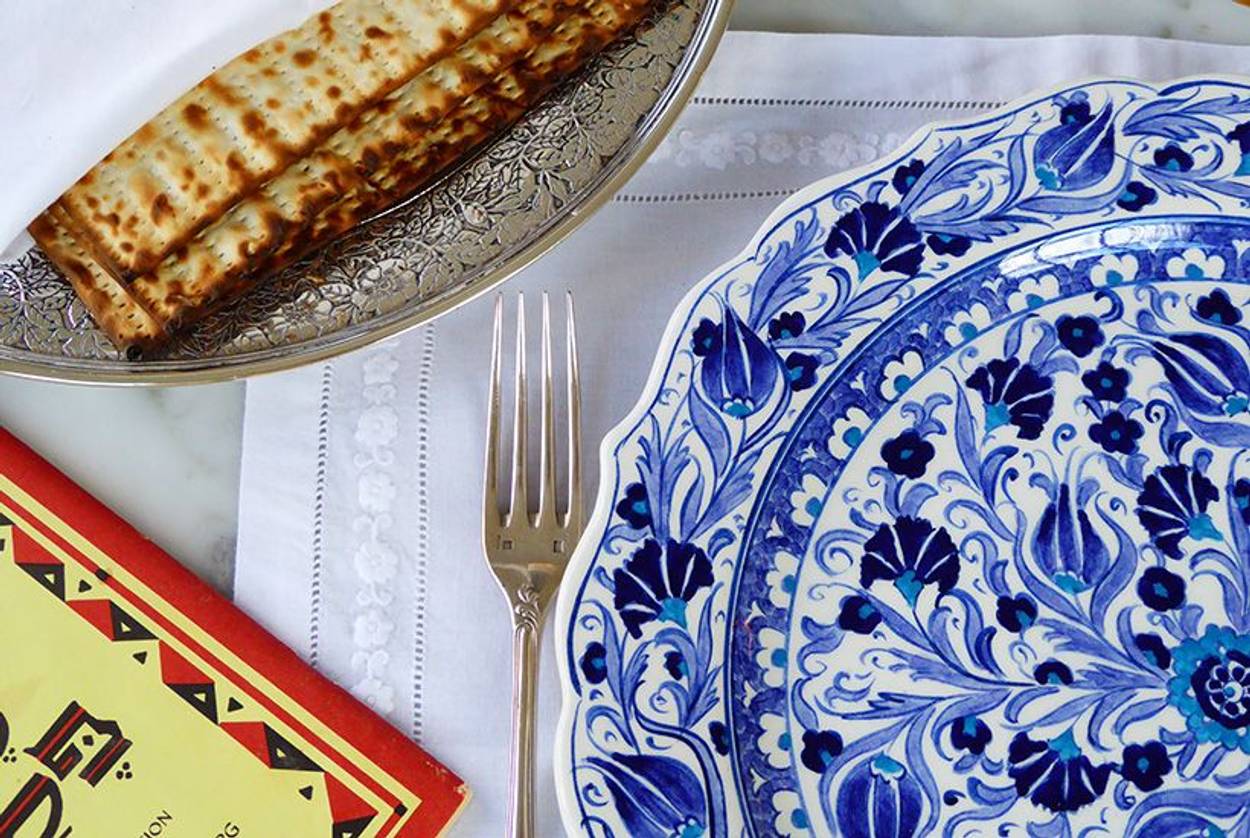
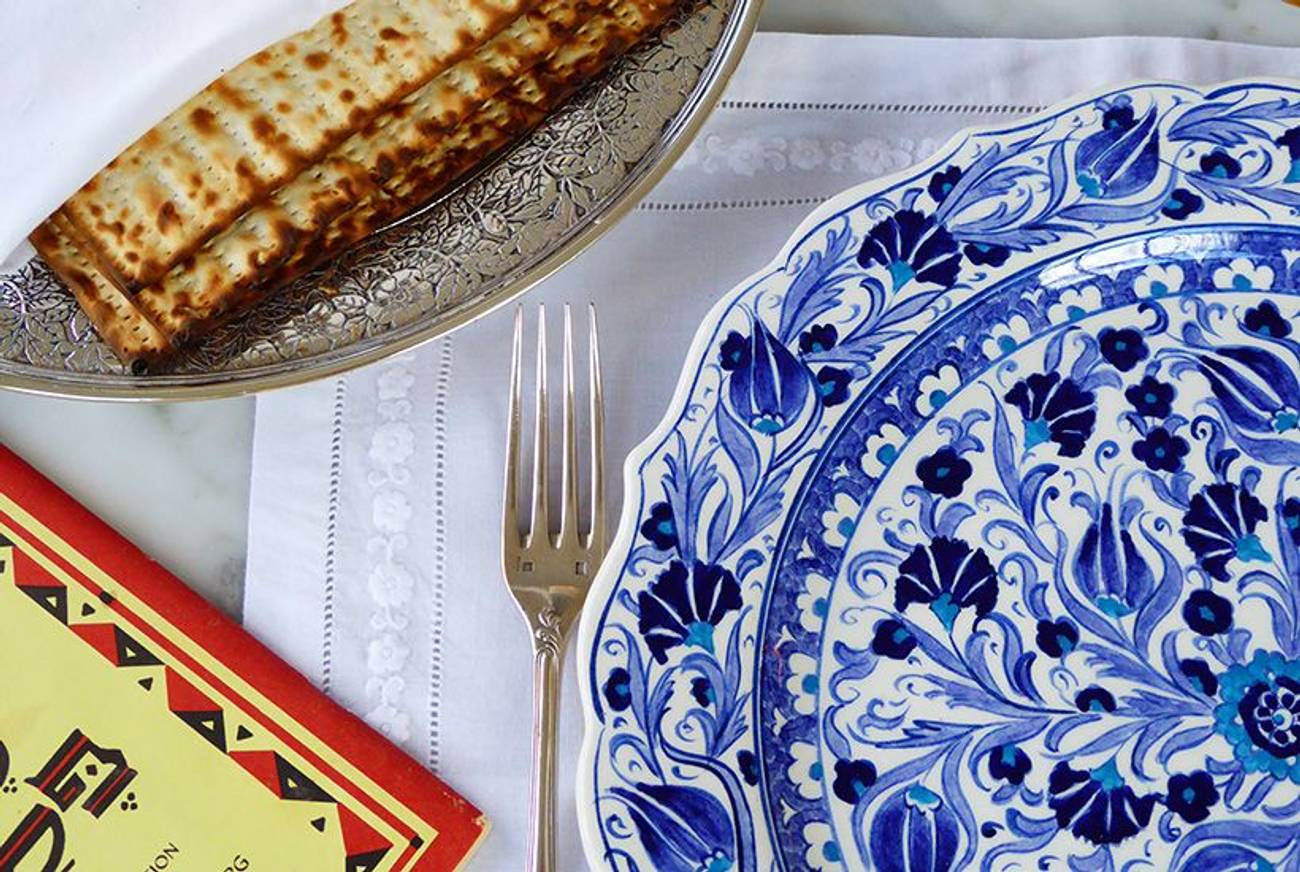


Every year, I try to bring a new theme to our Passover Seder. Unfailingly, I’m met by resistance. The Ashkenazi way of doing things—matzo ball soup, brisket, even the bottled Manischewitz gefilte fish (which one grandfather looked forward to every Passover)—is so ingrained into our familial ritual that trying something else somehow seems “wrong.” It’s as if I’m suggesting substituting salmon for turkey at Thanksgiving.
Last year I made some headway. My cookbook From a Polish Country House Kitchen, co-authored with Anne Applebaum, had just been published, and so we made a Polish Seder. OK, so it wasn’t much different from every other Seder, but we did have herring with raspberry sauce in lieu of the gefilte fish.
After a recent trip to Istanbul, I proposed doing a Turkish Seder this year. My children reacted like this:
“You’re still going to make brisket, right?”
“I don’t care about the gefilte fish …”
“Yeah, Mom, we can drop the gefilte fish—but not the matzo ball soup!”
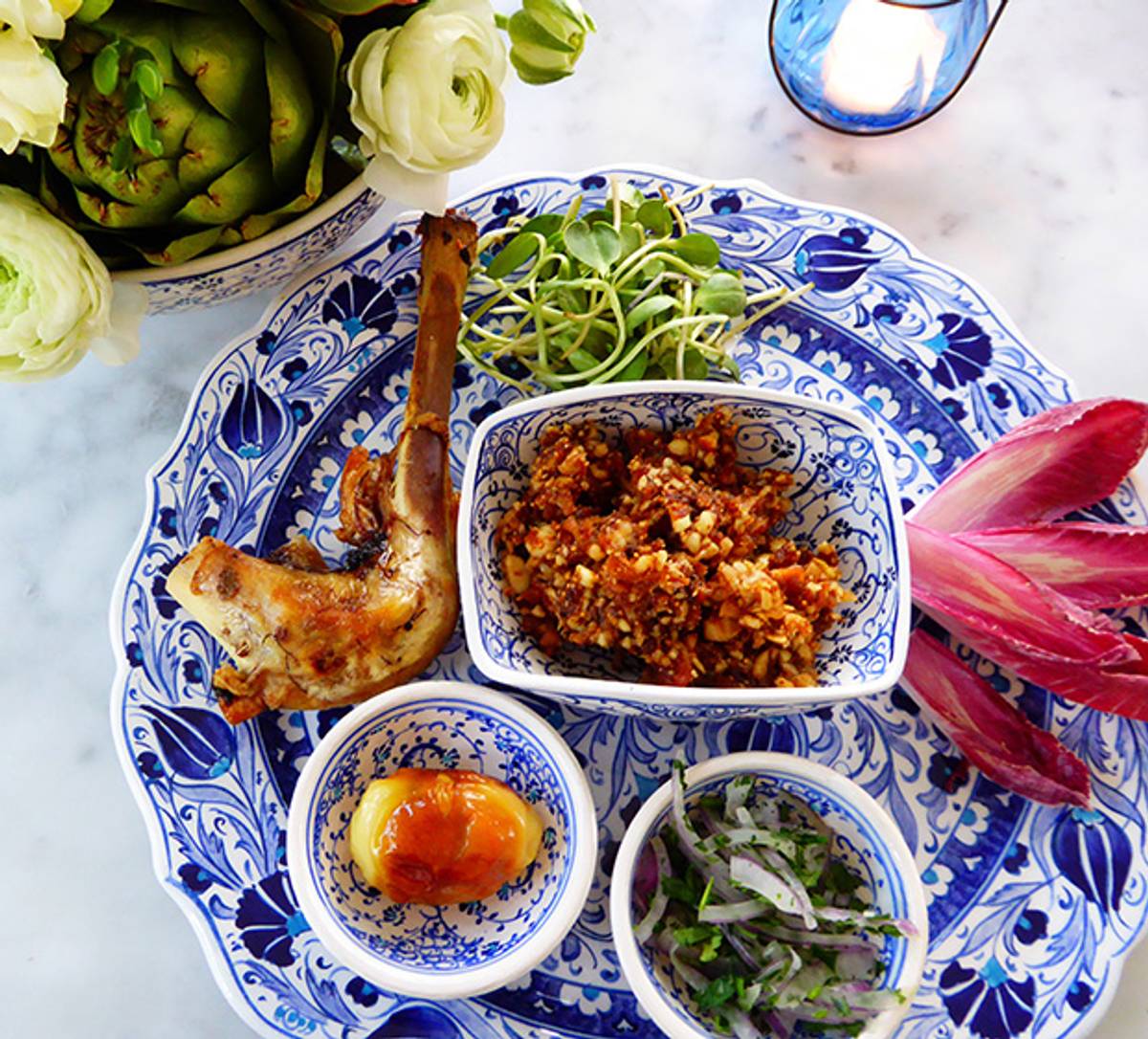
To go Turkish this Passover, I turned to the recent memoir-cum-cookbook The Ottoman Turk and the Jewish Girl, by Beyhan Cagri Trock. Among other dishes, the author has included authentic Jewish Turkish recipes for Passover, including, according to Trock, “wonderful vegetable and egg casseroles, meat and vegetable patties, and even matzo-layered meat and vegetable pies.”
This could be persuasive to my family. Especially if, in addition to the Turkish menu, we styled the Seder table accordingly: magical, candle-lit lanterns; exotic centerpieces and tableware; and Ottoman pillows upon which to “lounge.” I even have a ready-made children’s table: an antique tea table I picked up in the Istanbul Old Bazaar; restless 3-year-olds (or the “Wandering Jews,” as a friend once called them) will appreciate the table’s kid-friendly height and floor cushions in lieu of chairs. Strikingly, Ottoman sultans used a symbol we now recognize as a Star of David to decorate many objects, including the center of my tea table. You can’t get more kosher than that.
If you’re inspired to try a Turkish Seder, here are some ideas. Many accessories can be picked up inexpensively at stores such as World Market, or ordered online. (And save the lanterns for Sukkot.)
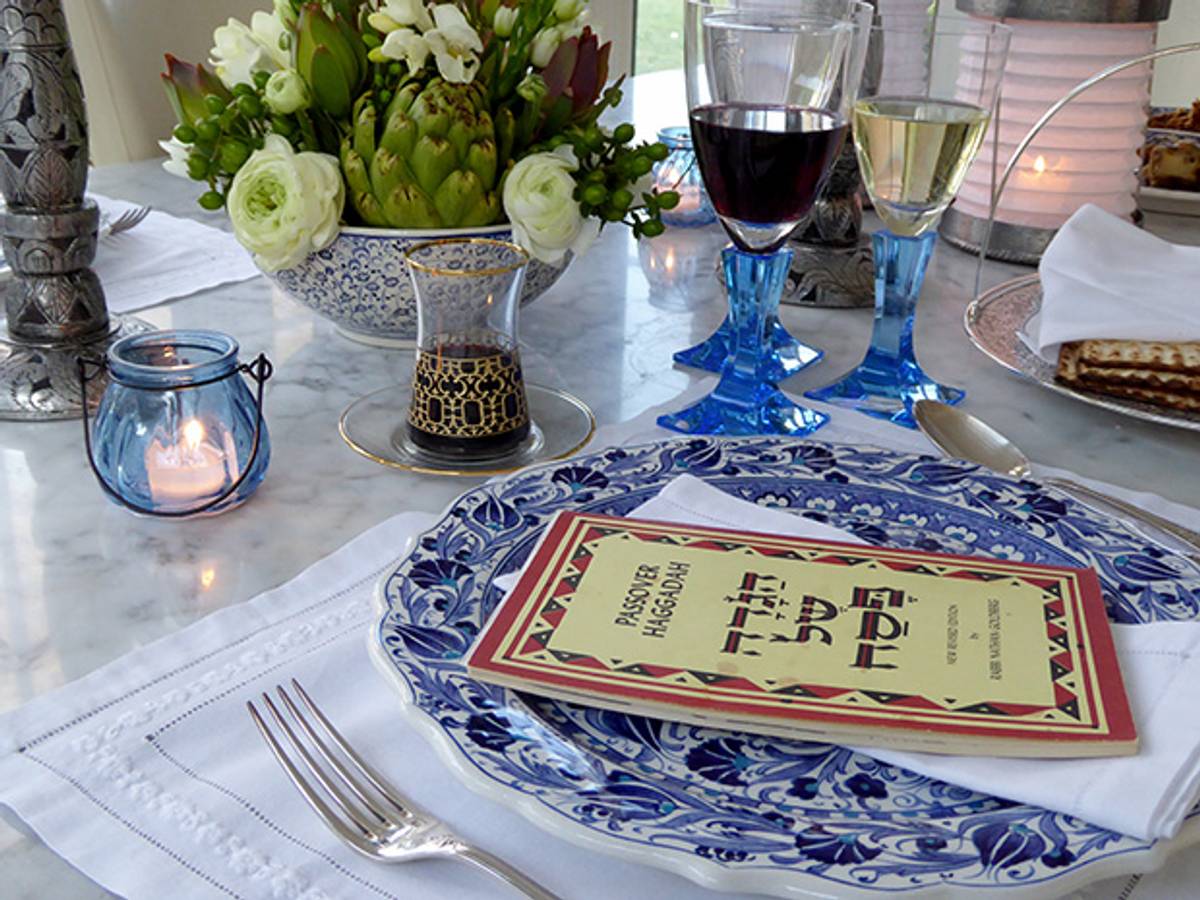
You can try Trock’s recipe for a raisin-based haroset. I also love Gil Marks’ classic Turkish haroset made out of dried fruits and almonds, fragrant with cinnamon and cardamom, which I’ve adapted below. In lieu of the traditional horseradish, I found a recipe for an onion-parsley relish, from Ayla Algar’s excellent Classical Turkish Cooking. The raw red onion, whose sting is mitigated slightly from marinating in salt, will certainly evoke the tears of slavery.
Blue-stemmed crystal wine glasses by Bohemian glassmaker Moser, available through Consider It Done, which ships nationally. For the kiddush cups, I’ve used a Turkish tea set purchased at the Topkapi Palace gift shop in Istanbul; it’s a replica of a Sultan’s set. (Shop Turkey has an eclectic collection.) The beauty of these is that when everyone recites the plagues, they can dab the drops of wine on the saucer. The embossed candlesticks and small glass lanterns are from World Market. The tin-plated copper lanterns are by Erdun in Istanbul’s Old Bazaar, also available for international shipping. I crafted the centerpiece, in Em-Er ‘s “Golden Horn” pattern bowl, using artichokes, freesia, ranunculus, Star of Bethlehem, Safari Sunset protea, with sprays of hypericum.
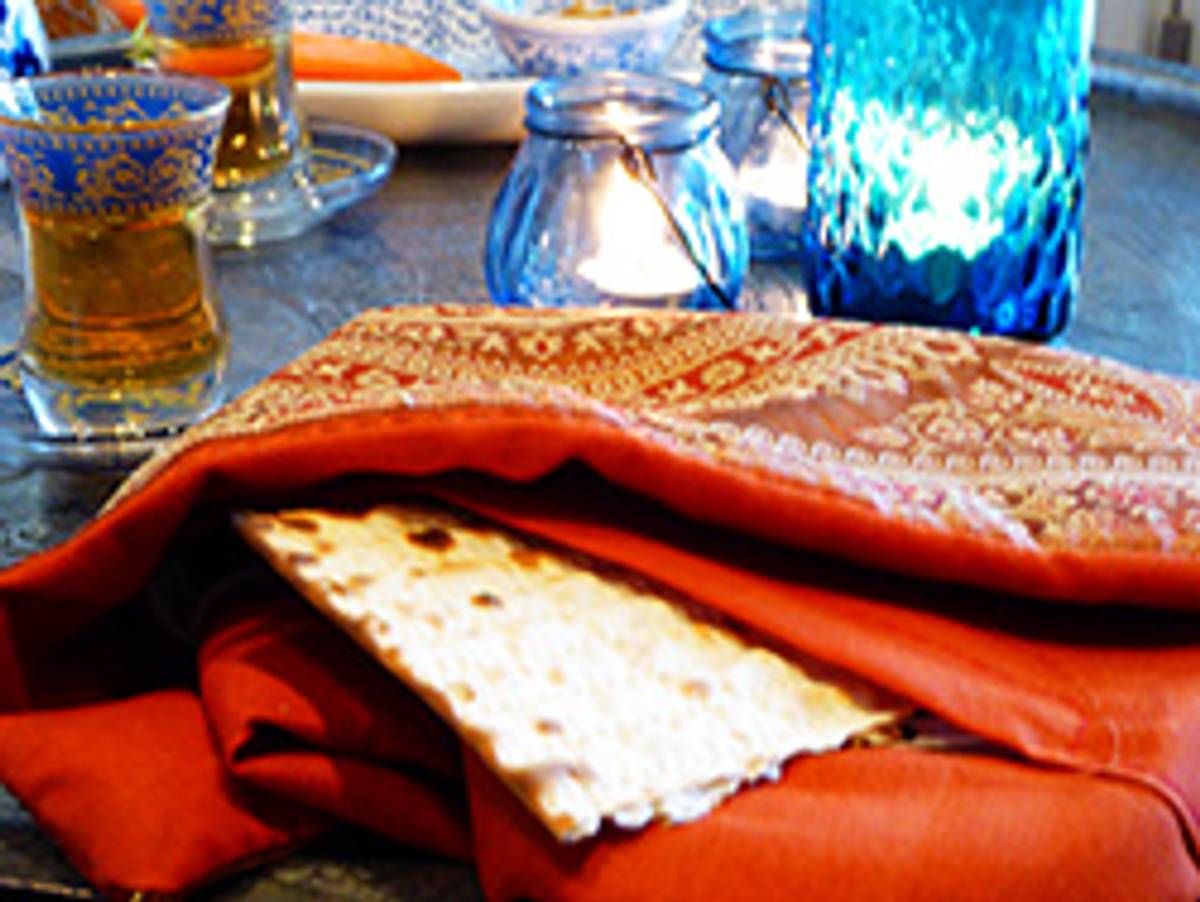
Bea Frum, 12, is nearly too big to sit there, but the tea table is so cool she’ll hang out there for one more year. An exotic pillow cover, purchased at a shuk in Istanbul, is used to hide the afikoman. More Turkish tea cups hold, in this case, what we call “kid champagne”—carbonated grape juice. The carrots and peanut butter should tide them through until dinner. Votive candles from World Market. The antique Ottoman tea table is also from Erdun in Istanbul’s Old Bazaar.
Note the “Star of David” Ottoman imprint in the table’s surface.
We’ll see how the Turkish-themed Seder goes; I won’t mention I’m thinking “India” for next year. I wonder if there is such a thing as a dal-based haroset?
Danielle Crittenden Frum is a contributing editor at Huffington Post and co-author, with Anne Applebaum, of From a Polish Country House Kitchen: 90 Recipes for the Ultimate Comfort Food. Follow her on Twitter @MyJewishTable.